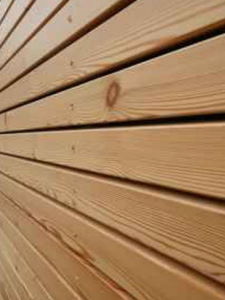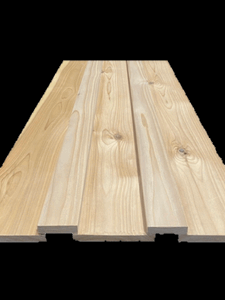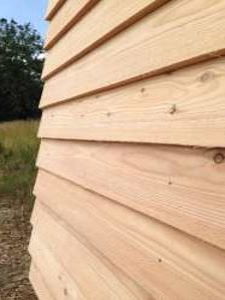



Fencing is not just about dividing up spaces it can also act as a wind break, noise reduction and a focal point within a landscape. Modern fencing assemblies generally consist of boards of one or two widths fixed to upright supports with (open joint) or without a gap between the boards. The open joints between the boards and the air space created between promotes air movement, this allows the fencing to remain dry and elevates those damp spots which is the killer of any timber, furthermore it aids in promoting durability and good looks.
All our timbers delivers different durability (please see below) but stunning looks for boundary fencing, screens, stores, bike sheds and car ports etc. Depending on the look and feel you want a preservative or wood treatment does not need to be added. The natural ageing process will produce a silver/grey colour. Should the installation situation require a treatment we have a range of environmentally friendly treatment for your timber please see our accessories page.To order please/enquire
or use our Contact form.Durability is the ability of a species to resist decay either naturally or through preservatives. The Class is based on the ability of the heartwood (inner part of the tree) to resist fungal decay. The sapwood (the living outermost portion of the tree)is considered not durable and should not be used for external projects without preservative.
BS EN 350 has 5 classes of durability they are:-
Class 1 to 3 can be left as untreated timber, a natural ageing process will accrue e.g. Cedar will turn a grey colour. Class 4 and 5 will need to be treated with preservatives.
For further information see www.greenspec.co.uk/building-design/cladding-durability-quality